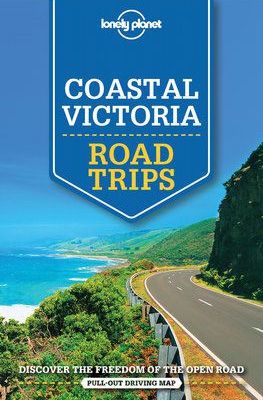An absolute highlight in the south of Australia was our drive along the Twelve Apostles, a collection of large limestone rocks near the coast of Port Campbell National Park, on the Great Ocean Road.
The sometimes harsh and extreme weather conditions on the south coast gradually eroded the soft limestone, creating caves in the cliffs. These caves then became arches that later collapsed. The boulders that remained are up to 50 high. Due to the continuous erosion there are eight left. As they are close together, the area has become a popular tourist attraction.
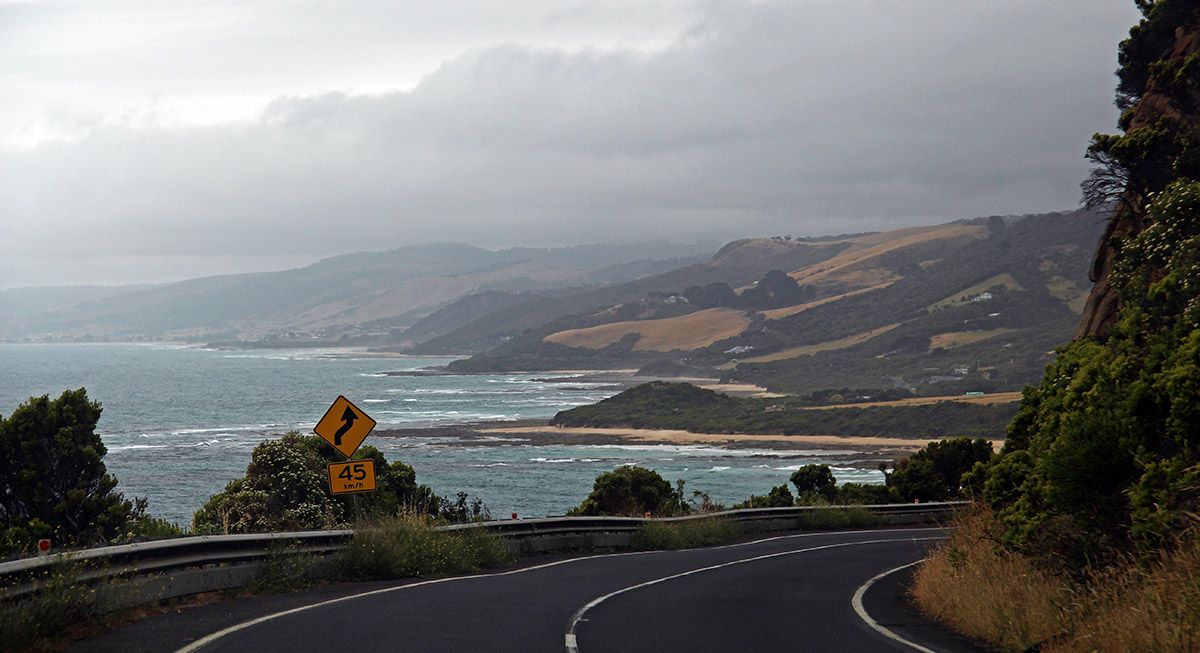
The Great Ocean Road
Although the ‘twelve’ apostles are beautiful to see, the true attraction is the crazy drive on the twisting Great Ocean Road. This 243-km-long road connects Torquay in the east with Allansford at Warrnambool in the west. The construction of the famous route was a work project for veterans of the First World War in the early 1930s.
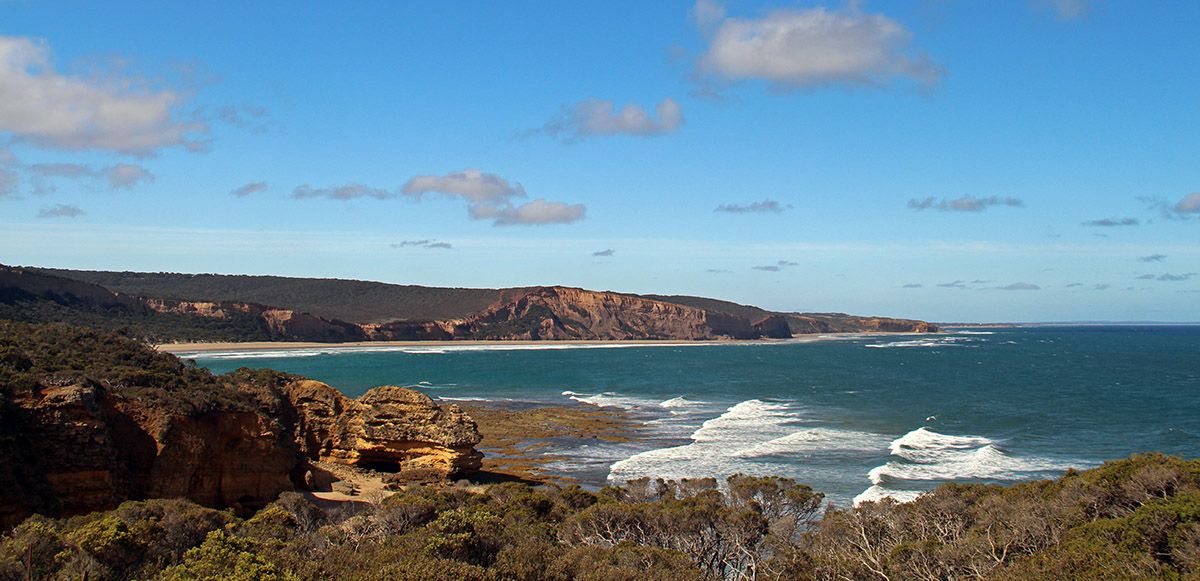
What to see and do
One of the most picturesque parts of the route is located in Port Campbell National Park between Port Campbell and Peterborough. The coastline in the national park consists of cliffs, rock formations and small islands. In addition to the Twelve Apostles, there is also the London Arch, Loch Ard Gorge and the Gibson Steps.
Apart from the viewpoints in Port Campbell National Park, there are many other viewpoints along the route that you should not miss either. Like Teddy’s Lookout in Lorne, Point Addis, Marriner’s Lookout in Apollo Bay and the lighthouse of Cape Otway.
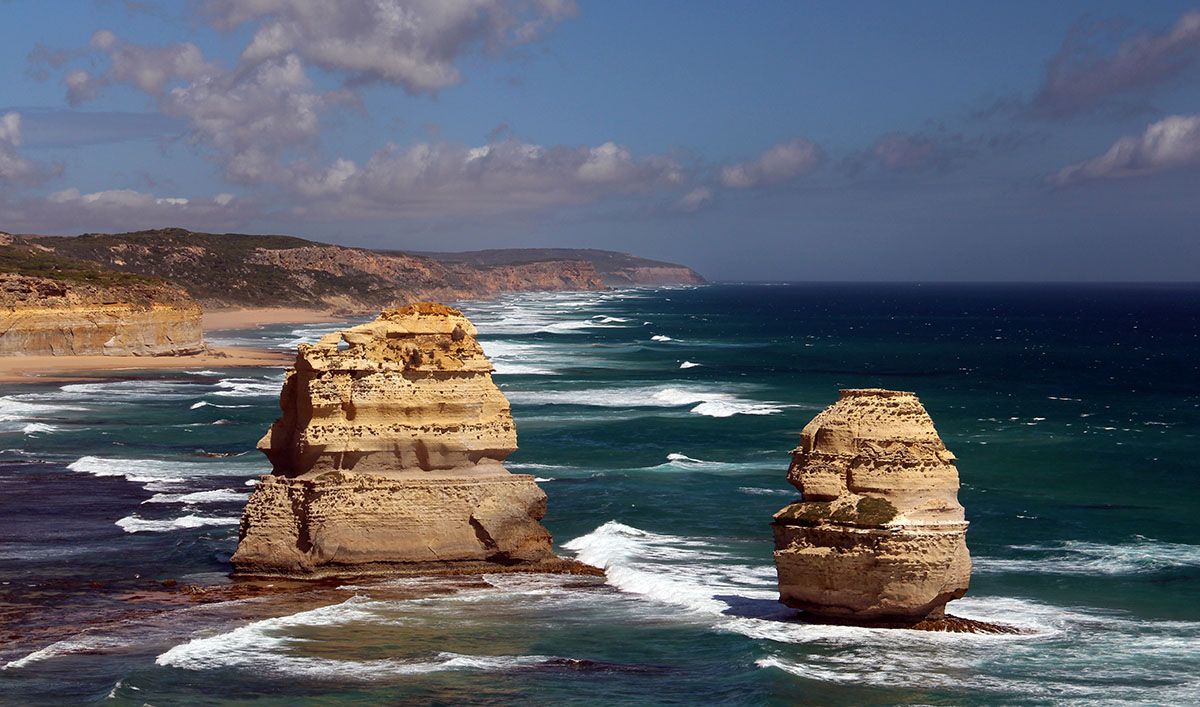
The Great Ocean Road also offers fantastic, short and longer walks where you may see koala bears, kangaroos, sea lions or even whales. In the Angahook-Lorne State Park near Aireys Inlet and Lorne you have many hiking trails. What’s more, in Otway National Park, at Mait’s Rest you have a half-hour loop walk through the rainforest. In the park you have some beautiful waterfalls and when it’s dark you can see glow-worms.
Interesting, longer walks include the Surf Coast Walk in Angahook-Lorne State Park. You decide at which point to step in. If you walk the entire coastal path then you will be over ten hours on the road. Another beautiful, easy walk takes you through the rainforest of Lake Elizabeth. You can also take a canoe trip at sunrise or sunset if you want to spot the platypus in its natural habitat.
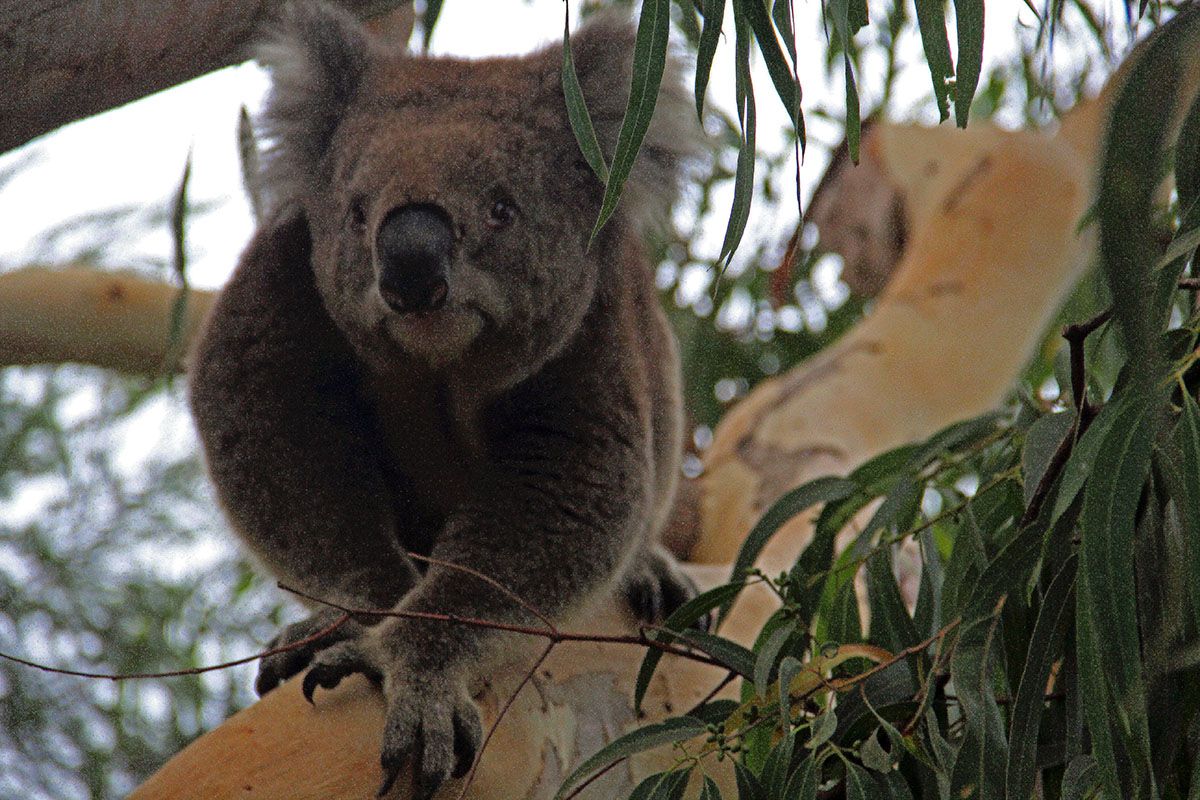
Some tips
A few more tips to enjoy one of the most beautiful coastal routes in the world:
- In principle it is possible to drive the entire route from east to west or vice versa in one day. You have to make choices on which sights you definitely want to see. It is better to plan two full days for the outward journey and then a third day for the return journey. You then have the opportunity to see all the coastal towns and go on some more walks.
- You don’t need a map to drive the Great Ocean Road. Just follow the signs. The signage and information about the sights is excellent. There are also plenty of petrol stations, restaurants and accommodation on the road. It goes without saying that during the high season you must book any accommodation (well) in advance. This is especially true at the weekend because the route is popular with Aussies.
- Some beaches along the route have dangerous currents. So, don’t just go swimming but check if there are signs showing where you should or should not swim.
- There are almost no overtaking lanes on the Great Ocean Road. You do have regular places where the slower traffic can move just off the road to let the faster traffic through. Keep to this etiquette. If you belong to the speed devils, don’t tailgate but keep enough distance until the driver in front of you can go off the road to let you through.
- On the way back, you can of course return via the Great Ocean Road but consider taking, like we did, a route through the interior. You’ll get to see totally different, possibly just-as-beautiful landscape.
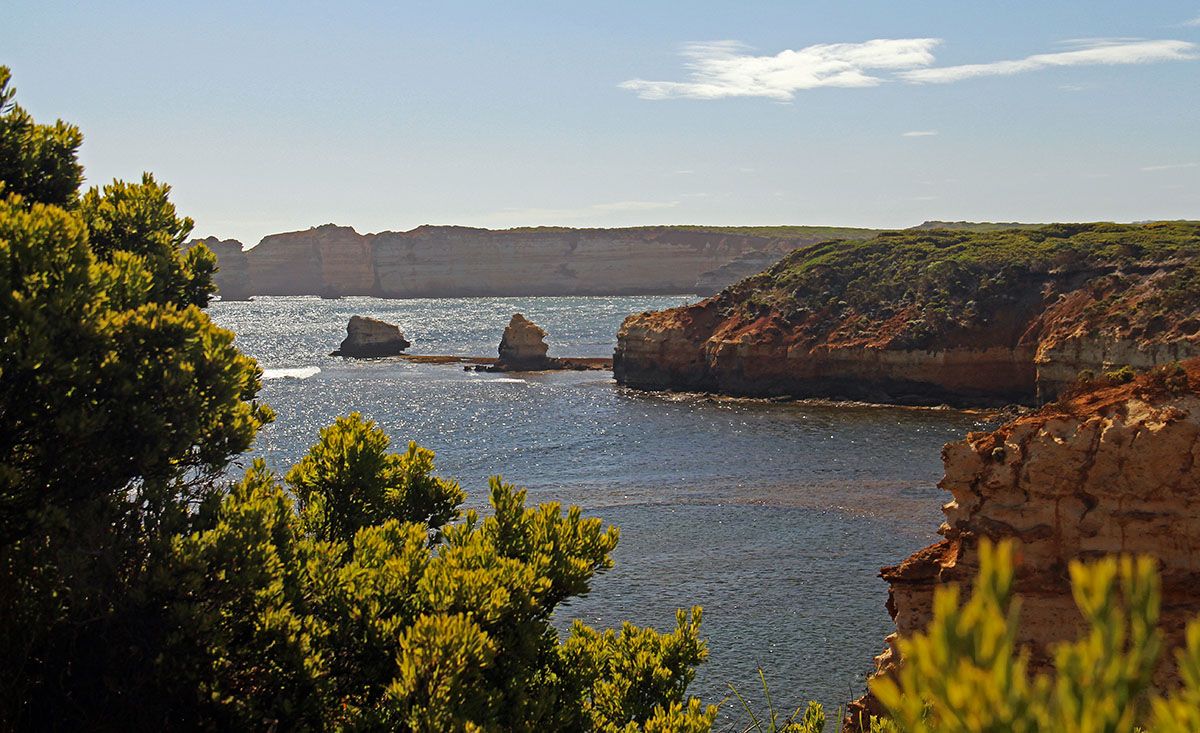
Practical matters
Best travel time
The best travel time to admire the Twelve Apostles is between December and March. The weather is nice, warm and sunny. From mid-December to January it is a lot busier, so February or March may be the best month to be there. We were there at the beginning of January and noticed that it was high season, especially in restaurants.
Transport
Travelling by public transport is not really an option. There are so many beautiful viewpoints and hiking opportunities on the way that we feel you’ll be left short of the Great Ocean Road if you don’t stop every now and then to take in the surroundings and enjoy the beautiful scenery. What remains are two options. Either do the trip with your own means of transport, such as a rental car or motorhome, or you book an organised tour with a tour operator. We went there with our own car because this gave us some more flexibility.
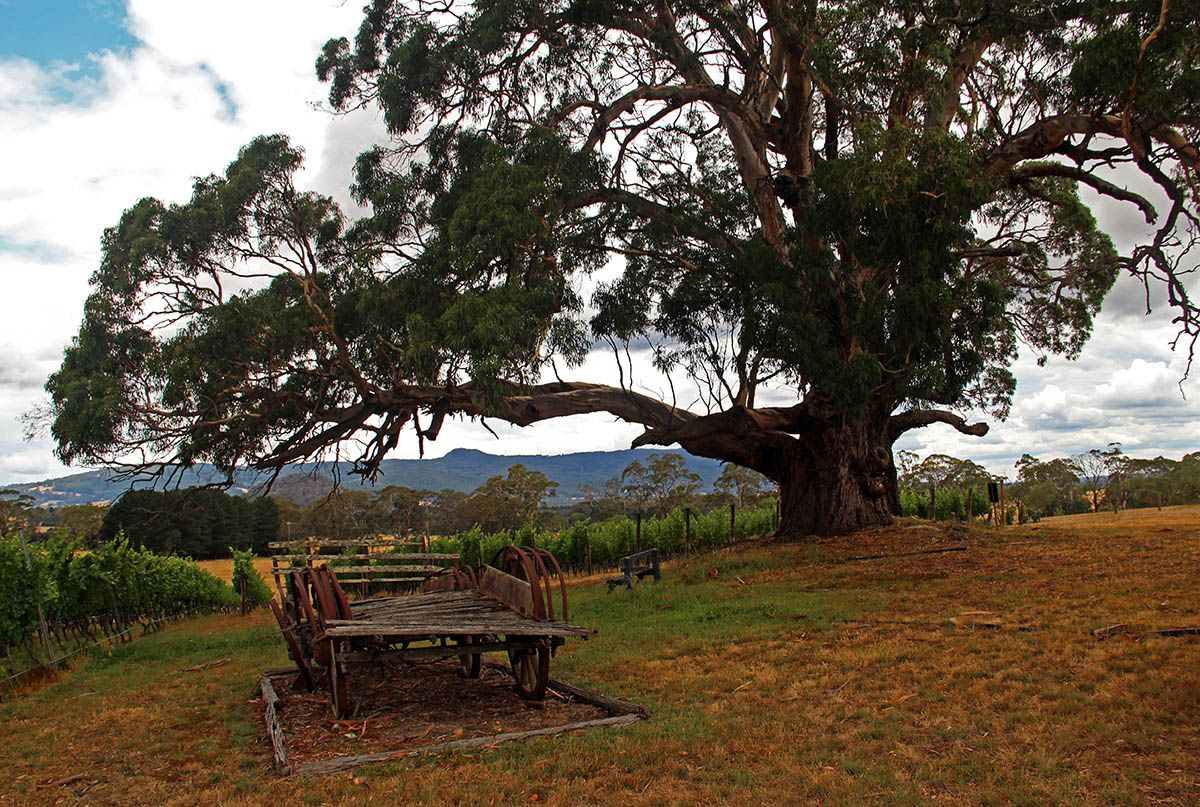
Accommodation
Along the route you have quite a choice of accommodation, especially in the area of Torquay, Lorne and Apollo Bay. However, in high season and especially at weekends prices are high and availability is limited. Click here for accommodation on the Great Ocean Road.
If you travel with a motorhome you can stay overnight in the Great Ocean Road Tourist Park, the BIG4 Apollo Bay Pisces Holiday Park or the Torquay Forshore Caravan Park.
Other topics you may be interested in
- Relaxing in the cosmopolitan city of Melbourne
- Enjoying nature in the Blue Mountains
- Exploring Sydney


